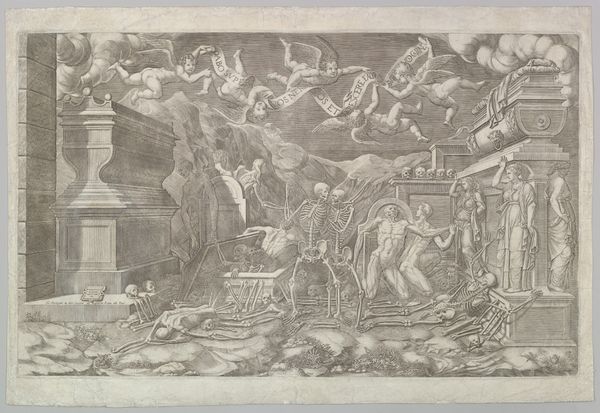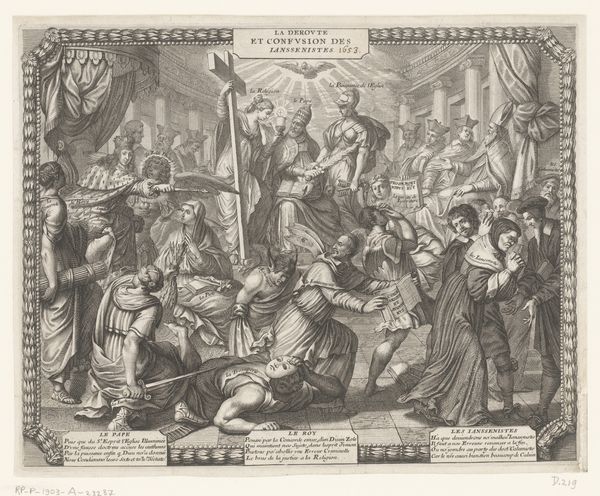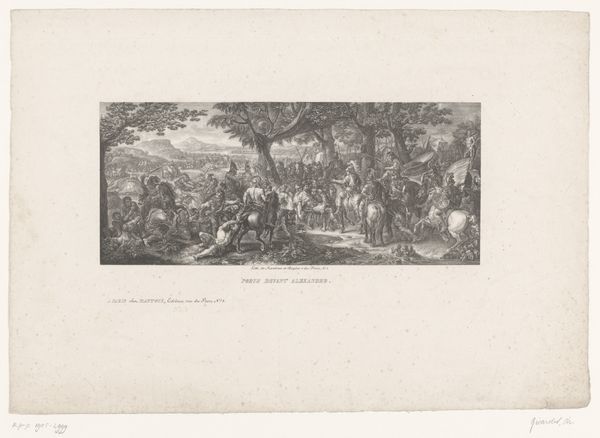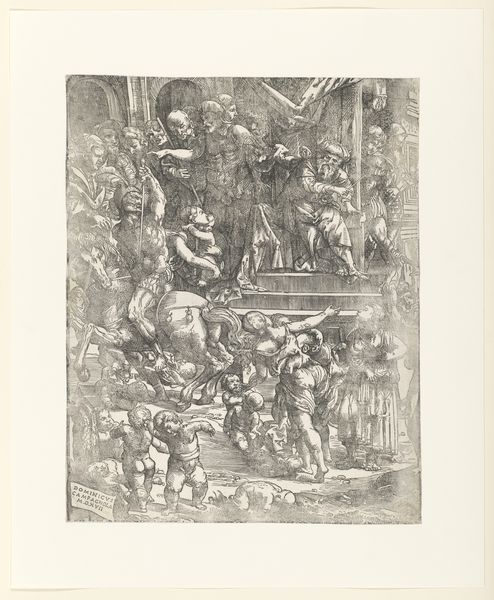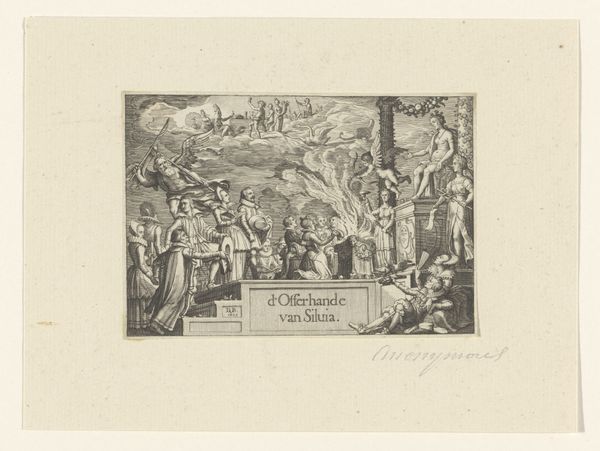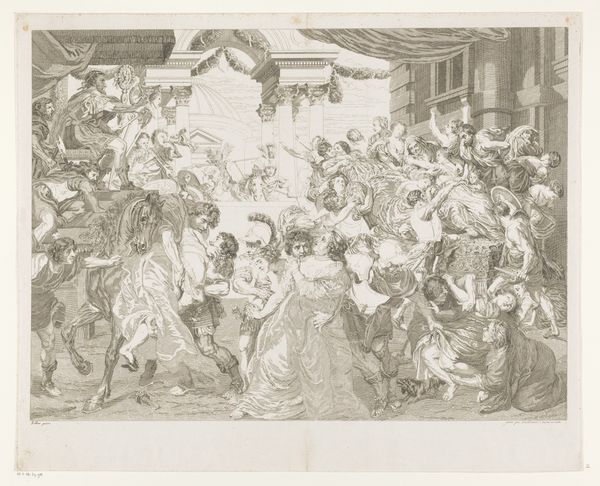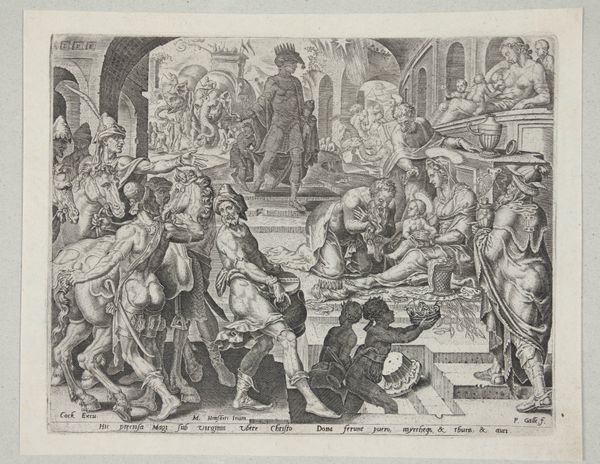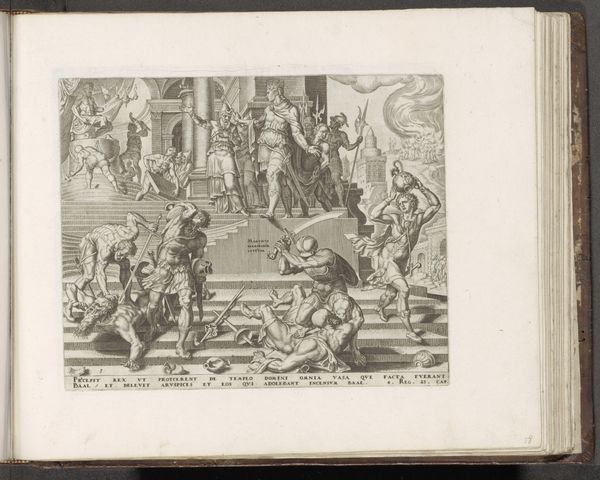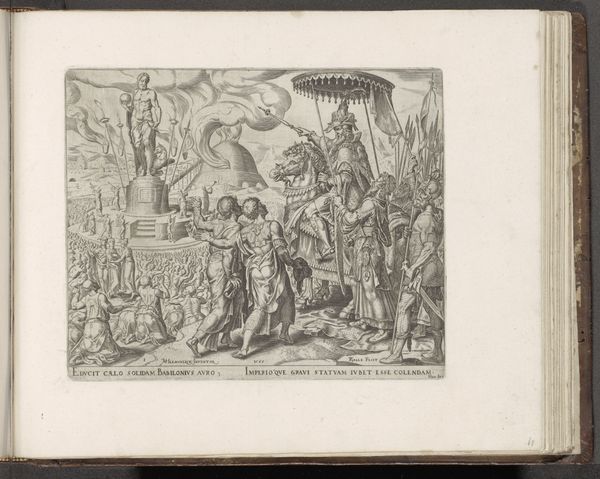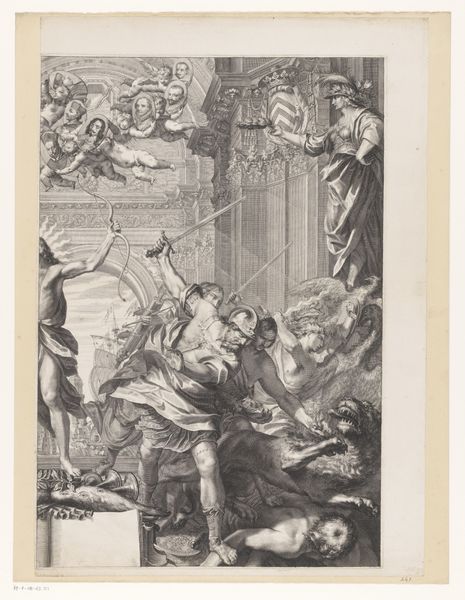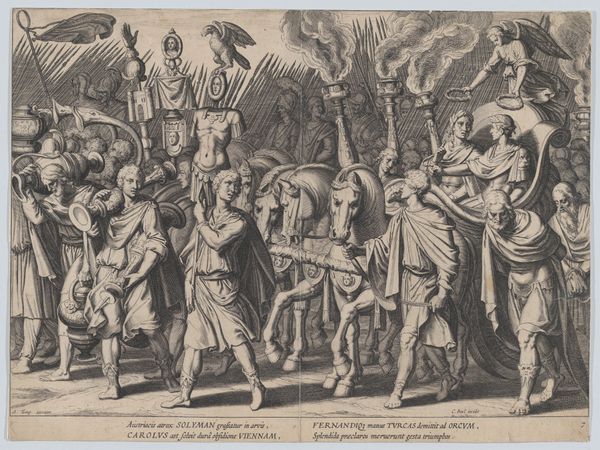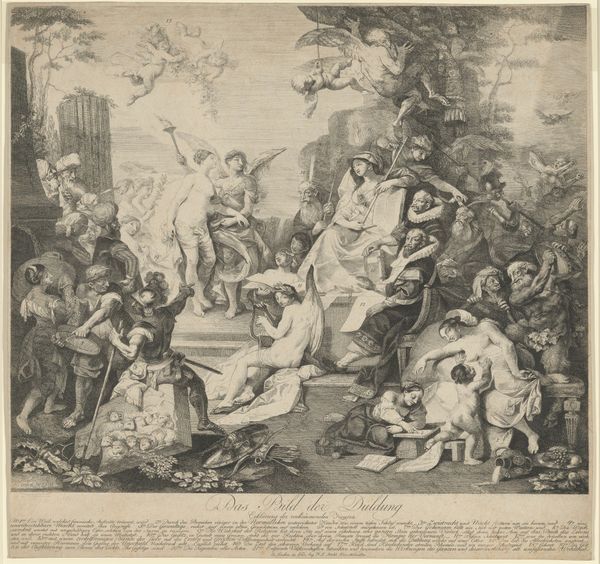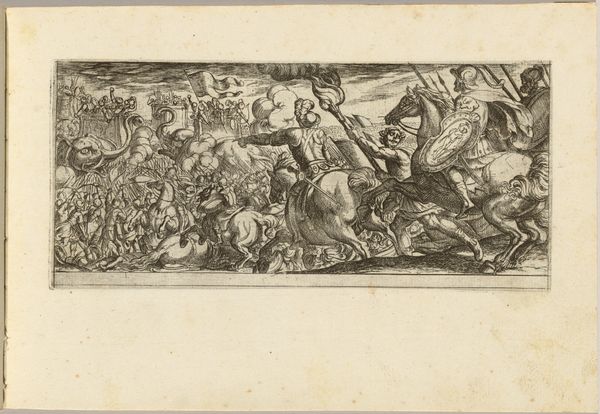
Fotoreproductie van het fresco De triomf der doden naar Andrea di Cione, genaamd Orcagna, in het Camposanto te Pisa, Italië 1860 - 1881
0:00
0:00
print, fresco, photography
# print
#
landscape
#
fresco
#
photography
#
history-painting
#
italian-renaissance
Dimensions: height 198 mm, width 256 mm
Copyright: Rijks Museum: Open Domain
Editor: This is a photographic reproduction of the fresco "The Triumph of Death" by Andrea di Cione, also known as Orcagna, taken by Giacomo Brogi sometime between 1860 and 1881. What strikes me is the almost journalistic aspect, the stark depiction of death across social classes. What can you tell me about it? Curator: Well, focusing on the means of production, we must consider both the original fresco’s materiality – pigments, plaster, the very labor involved in its creation – and how that labor is replicated and transformed through the photographic process. How does the act of photographic reproduction affect the way viewers engage with the original work? Editor: That's interesting. I hadn't thought about how photography changes our relationship with frescoes. It makes it portable and accessible, right? But something must also be lost in the process? Curator: Precisely. Think about Brogi's labour versus Orcagna's. Orcagna controlled every element from pigment creation to application. Brogi, while skillful, intervened to document and disseminate. How does that shift in control over the means of representation impact the work’s cultural significance? This changes its function and value, now viewed in albums and books. Editor: So, photography democratizes art, yet simultaneously shifts its status. Curator: Indeed. Moreover, consider the social context: Brogi was operating during a period of intense archaeological interest and tourism in Italy. What impact might these circumstances have on his choice of subject matter and his method of capturing it? He aimed to document a Renaissance masterpiece, for popular consumption. Editor: So, the image functions almost like a souvenir, turning profound themes into a commercial product. Curator: Exactly! A material transaction shaped by its time. Editor: That definitely sheds light on both the fresco and its photographic reproduction, seeing them not just as art objects, but as products of labor and consumption. Thanks. Curator: My pleasure!
Comments
No comments
Be the first to comment and join the conversation on the ultimate creative platform.
